
Sergeant Thomas H. "Boston" Corbett was an English-born American soldier and milliner who killed John Wilkes Booth, the assassin of President Abraham Lincoln on April 26, 1865. Known for his devout religious beliefs and eccentric behavior, Corbett was reportedly a good soldier and had been a prisoner of war at Andersonville Prison. Corbett shot and mortally wounded Booth when his regiment surrounded him in pursuit. For his actions, Corbett was largely considered a hero by the American media and public.

John Wilkes Booth was an American stage actor who assassinated United States President Abraham Lincoln at Ford's Theatre in Washington, D.C., on April 14, 1865. A member of the prominent 19th-century Booth theatrical family from Maryland, he was a noted actor who was also a Confederate sympathizer; denouncing President Lincoln, he lamented the then-recent abolition of slavery in the United States.

Samuel Alexander Mudd Sr. was an American physician who was imprisoned for conspiring with John Wilkes Booth concerning the assassination of Abraham Lincoln.

Our American Cousin is a three-act play by English playwright Tom Taylor. It is a farce featuring awkward, boorish American Asa Trenchard, who is introduced to his aristocratic English relatives when he goes to England to claim the family estate. The play premiered with great success at Laura Keene's Theatre in New York City in 1858, with Laura Keene in the cast, the title character played by Joseph Jefferson, and Edward Askew Sothern playing Lord Dundreary. The play's long-running London production in 1861 was also successful.
Tactical or battlefield intelligence became vital to both sides in the field during the American Civil War. Units of spies and scouts reported directly to the commanders of armies in the field, providing details on troop movements and strengths. The distinction between spies and scouts was one that had life or death consequences: if a suspect was seized while in disguise and not in his army's uniform, he was often sentenced to be hanged. A spy named Will Talbot, a member of the 35th Battalion, Virginia Cavalry, was left behind in Gettysburg after his battalion had passed through the borough on June 26–27, 1863. He was captured, taken to Emmitsburg, Maryland, and executed on orders of Brig. Gen. John Buford.

Ford's Theatre is a theater located in Washington, D.C., which opened in 1863. The theater is best known for being the site of the assassination of Abraham Lincoln. On the night of April 14, 1865, John Wilkes Booth entered the theater box where Lincoln was watching a performance of Tom Taylor's play Our American Cousin, slipped the single-shot, 5.87-inch derringer from his pocket and fired at Lincoln's head. After being shot, the fatally wounded Lincoln was carried across the street to the nearby Petersen House, where he died the next morning.

Clara Hamilton Harris was an American socialite. She and her then fiancé, and future husband, Henry Rathbone, were the guests of President Abraham Lincoln the night he was shot at Ford's Theatre. Rathbone's mental state deteriorated after the assassination, and in 1883, Harris was murdered by him.

Edward Steers Jr., had a prominent career as a scientist before he retired and began writing full time. This American historian is a noted authority on U.S. President Abraham Lincoln. Steers has received awards in both the fields of scientific research and history.

John Sleeper Clarke was a 19th-century American comedian and actor.
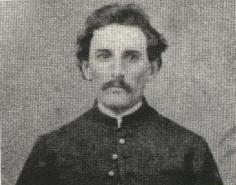
James William Boyd was an American Confederate military officer who was alleged in a conspiracy theory to have been killed in the place of John Wilkes Booth, the assassin of U.S. President Abraham Lincoln, due to their resemblance.
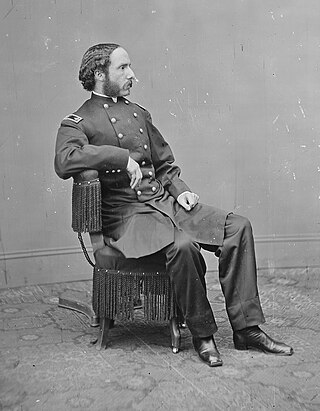
Henry Reed Rathbone was a United States military officer and lawyer who was present at the assassination of President Abraham Lincoln. Rathbone and his fiancé Clara Harris were sitting with Lincoln and Lincoln's wife Mary Todd Lincoln, when the president was shot by John Wilkes Booth at Ford's Theatre; when Rathbone attempted to apprehend Booth, Booth stabbed and seriously wounded him. Rathbone may have played a part in Booth's leg injury. Although he recovered, Rathbone's mental state deteriorated afterwards, and in 1883, he murdered his wife, Clara, in a fit of madness, later being declared insane by doctors and living the rest of his life in a lunatic asylum.

John Harrison Surratt Jr. was an American Confederate spy who was accused of plotting with John Wilkes Booth to kidnap U.S. President Abraham Lincoln; he was also suspected of involvement in the Abraham Lincoln assassination. His mother, Mary Surratt, was convicted of conspiracy by a military tribunal and hanged; she owned the boarding house that the conspirators used as a safe house and to plot the scheme.
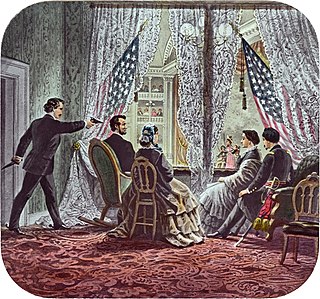
On April 14, 1865, Abraham Lincoln, the 16th president of the United States, was assassinated by John Wilkes Booth while attending the play Our American Cousin at Ford's Theatre in Washington, D.C. Shot in the head as he watched the play, Lincoln died of his wounds the following day at 7:22 am in the Petersen House opposite the theater. He was the first U.S. president to be assassinated. His funeral and burial were marked by an extended period of national mourning.
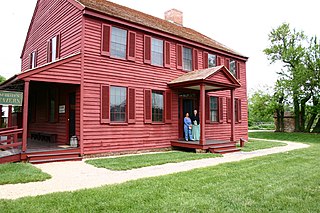
The Surratt House is a historic house and house museum located at 9110 Brandywine Road in Clinton, Prince George's County, Maryland, United States. The house is named for John and Mary Surratt, who built it in 1852. Mary Surratt was hanged in 1865 for being a co-conspirator in the Abraham Lincoln assassination. It was acquired by the Maryland-National Capital Park and Planning Commission (M-NCPPC) in 1965, restored, and opened to the public as a museum in 1976.
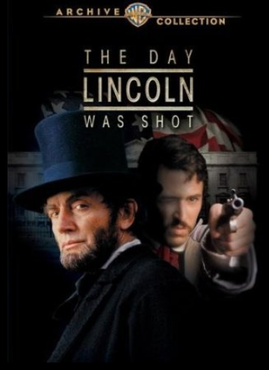
The Day Lincoln Was Shot is a 1998 American television film based on the book by Jim Bishop. It is a re-creation of the assassination of Abraham Lincoln, co-written and directed by John Gray, and stars Lance Henriksen as Abraham Lincoln and Rob Morrow as John Wilkes Booth.
John Minchin Lloyd was a bricklayer and police officer in Washington, D.C., in the United States. He was one of the first police officers hired by the Metropolitan Police Department of the District of Columbia when its Day Watch was first formed in 1855. He played a role in the trial of the conspirators in the Abraham Lincoln assassination. Arrested but never charged in the conspiracy, Lloyd's testimony was critical in convicting Mary Surratt.
James W. Pumphrey was a livery stable owner in Washington, D.C., who played a minor role in the events surrounding the assassination of Abraham Lincoln and its aftermath. Assassin John Wilkes Booth hired a horse from Pumphrey which he used to escape after the deed.
Manhunt is an American television miniseries created by showrunner Monica Beletsky, adapted from James L. Swanson's book Manhunt: The 12-Day Chase for Lincoln's Killer. The series follows Edwin Stanton's search for John Wilkes Booth in the aftermath of Abraham Lincoln's assassination. Carl Franklin directed, and British actor Tobias Menzies played Stanton. The series was produced for Apple TV+, and was released on March 15, 2024.
John H. Rhodehamel is an American historian and author.















